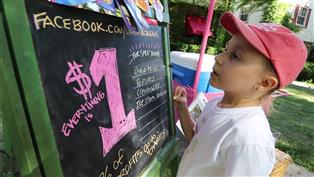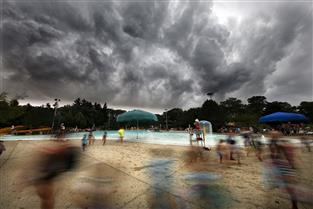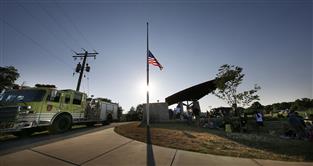A study of the Wauwatosa School District's special education programs found achievement gaps among demographic groups and a system that was struggling to break free of traditional practices that separated children identified as different from their peers.
"Wauwatosa has made significant moves to move all kids within general ed, and provide that support within general ed, but not all the pieces are there," said Elise Frattura, a University of Wisconsin-Milwaukee expert on special education systems who spoke to the School Board last week.
Districts nationwide are striving to bring special education students out of isolation and back into the general classroom. While generally just 1 to 2 percent of the students in a district are intellectually disabled, a far wider group are cut off from higher achievement by being segregated in special ed settings, she said.
Inequities among groups
In Wauwatosa, African-American students, students from poverty, those with disabilities and students who speak non-English languages show low achievement and are classified as special education students far beyond the proportion of the total student body they represent, Frattura's report said.
"There are significant learning gaps between students with disabilities, students of poverty and students that are African-American," she said. "There's also a significant overlap in some of these groups.
"There's a significant referral rate to special education of African-American students. So there's about 16 percent of the school district as far as student population that is African-American, but often 36 to 40 percent of the referrals for special education are African-American."
The state Department of Public Instruction, and best practice, would have the referral rate match the percentage of students of a group in the district.
"We're seeing some disproportionality that's not appropriate," she said.
Caught in a funnel
She called the tendency to recommend members of these groups — African-Americans, children of poverty, children with disabilities — more often for special services a "funnel" that pulls them out of the mainstream.
Students that get pulled out of general education — "the core instruction" — get furthest behind, she said, and consequently they are not ready for advanced classwork, though their intellect may be fine.
Frattura had praise for the district's understanding of these issues and said it had made strides, but she said the problem of perceptions of low achievement are systemic and not easily changed.
Problems in staffing
Frattura had a specific criticism of district staffing.
"I have to say, this is a bit of a hiccup, this is the hard point: special ed is not staffed as well here as they are in other districts, and so that's a point that has to be discussed."
She said that by "not staffed as well," she meant the number of students per teacher was high.
Beyond caseload, she said, "it's not staffed as equitably across buildings."
It may come down to a reallocation of funds to increase supports, Frattura said. The goal would be to create teams of grade-level teachers paired with a special ed teacher appropriate to that grade level that works with that team.
Setting future goals
"You have so many pieces of the puzzle," Frattura said. "Gluing them together in a way that can really build some momentum — then, you know Wauwatosa needs to be the leader around high achievement of students with disabilities, of color, of poverty. You just do."
"So what are your plans for using this?" School Board member Mary Jo Randall asked Superintendent Phil Ertl.
"If you look back and look at any of the audits we've done in the past, including our financial audit, each year, take an audit for what it is," Ertl said. "It's an attempt to expose your weaknesses. ... Clearly, there's some opportunities in this. Dr. Frattura was very nice in pointing out some of the positive things we're doing, but I look and say what are the opportunities."
He said Frattura had already been working with the district on an action plan around these issues, and he would create a team of teachers and administrators to look at "how does this fit within our mission, take into account recommendations and move this forward."
More from News and Features
- Anodyne Coffee plans to open location in Wauwatosa Village
- Wauwatosa Meetings: Aug. 4
- Video: Wauwatosa girl's curbside ice cream stand raises money for the hungry
- Wauwatosa News and Notes: Hands-only CPR training offered; Firefly Art Fair is Aug. 6-7
- Wauwatosa Ask Now: Why are there barriers and fencing along the North Avenue bridges over the Menomonee River?
- Mystery Photo Contest: July 28
- Wauwatosa gears up for National Night Out event, this year at the zoo
- Election 2016: Wisconsin's 4th District candidates weigh in
- Wauwatosa's Luther Manor residents share smiles through flower delivery
- Wauwatosa Police Report: July 17-23














